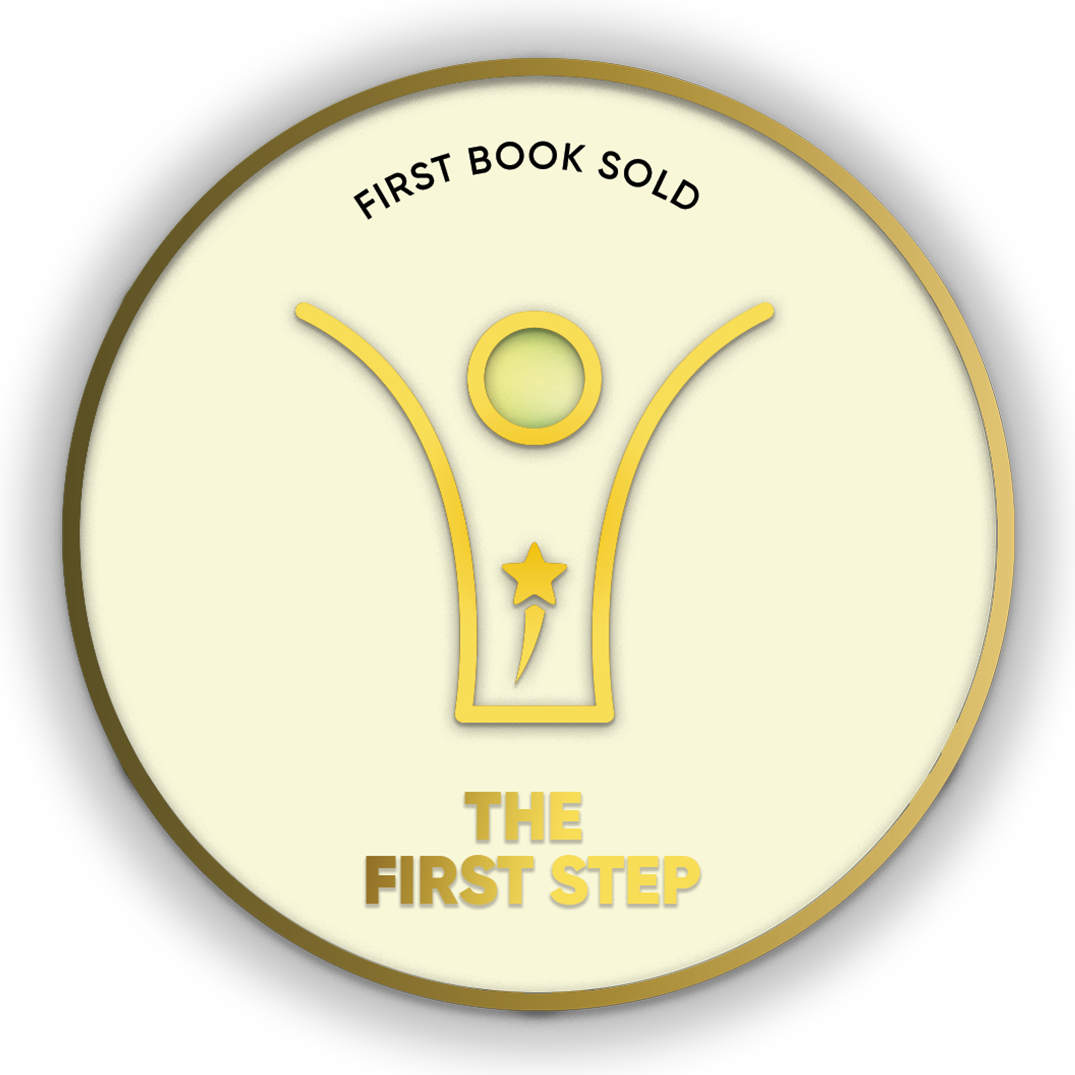
- Discover books
- For Writers
-
For Writers
-
Indie Author Championship
-
Challenges
Writing Contests
- Get Started

"It was a wonderful experience interacting with you and appreciate the way you have planned and executed the whole publication process within the agreed timelines.”
Subrat SaurabhAuthor of Kuch Woh Pal -
Dr.S Muthu Vijaya Pandian
WriterProfessor & Senior Innovator, Design Thinking @ SNS College of Technolgy, CoimbatoreRead More...
Professor & Senior Innovator, Design Thinking @ SNS College of Technolgy, Coimbatore
Read Less...Crop your profile image

A Text Book of Robot & Robotics
Books by Dr K P Parthiban, Dr S Muthu Vijaya Pandian, Ms B Sajitha, Mr R Pradeep
The word "robot" is derived from the word "robota," which is a slave or forced labour in Czech. We will assign the robot some jobs, and it will carry them out exactly like a servant. This is similar to having a servant.
Karel Capek coined the phrase "robot" in the year 1921. A writer from the Czech Republic by the name of Karel Capek, it was titled Rossum's Universal Robot (R.U.R). Additionally, he coined the phrase "r
The word "robot" is derived from the word "robota," which is a slave or forced labour in Czech. We will assign the robot some jobs, and it will carry them out exactly like a servant. This is similar to having a servant.
Karel Capek coined the phrase "robot" in the year 1921. A writer from the Czech Republic by the name of Karel Capek, it was titled Rossum's Universal Robot (R.U.R). Additionally, he coined the phrase "robota," or the robot, in that specific drama. However, he described the robot in the following way: it had a human-like appearance. However, there are certain robots that we utilise now that don't resemble people. So, in reality, this is how the term "robot" was first used in 1921. However, there was not a single robot in existence at the time.
The term "robot" has been defined in a variety of ways throughout the literature. This is nothing more than an automated machine, for instance, the Oxford English Dictionary defines a robot as "a machine capable of carrying out a complicated set of tasks automatically, especially one programmable by a computer." The robot is therefore described as an autonomously controlled, reprogrammable, multifunctional manipulator, programmable in three or more axes, which may be either fixed in place or mobile for use in industrial automation applications, by ISO, or the International Organization for Standardization.
A Text Book of Computer Networks
Books by N. Arun Prasath, S.muthu Vijaya Pandian, N.kaleeswari, M.muthukrishnaveni And V.suresh Babu
The concept of Network is not new. In simple terms it means an interconnected set of some objects. For decades we are familiar with the Radio, Television, railway, Highway, Bank and other types of networks. In recent years, the network that is making significant impact in our day-to-day life is the Computer network.
The concept of Network is not new. In simple terms it means an interconnected set of some objects. For decades we are familiar with the Radio, Television, railway, Highway, Bank and other types of networks. In recent years, the network that is making significant impact in our day-to-day life is the Computer network.
A Book of Communication Networks
Books by N Arun Prasath, S Muthu Vijaya Pandian, N Kaleeswari, M Muthukrishnaveni, V Suresh Babu
The concept of Network is not new. In simple terms it means an interconnected set of some objects. For decades we are familiar with the Radio, Television, railway, Highway, Bank and other types of networks. In recent years, the network that is making significant impact in our day-to-day life is the Computer network
The concept of Network is not new. In simple terms it means an interconnected set of some objects. For decades we are familiar with the Radio, Television, railway, Highway, Bank and other types of networks. In recent years, the network that is making significant impact in our day-to-day life is the Computer network
WORK SYSTEM DESIGN
Books by Dr K P Parthiban & Dr S Muthu Vijaya Pandian
The degree of productivity, in the creation, decides the productivity, proficiency and execution of the undertaking, for example the higher the productivity of the firm the more prominent will be the acquiring limit. It targets deciding the connection between the information and result, in a specific creation process. So, it is only achieving the most elevated conceivable result, while consuming least factors of creation.
Productivity is frequently con
The degree of productivity, in the creation, decides the productivity, proficiency and execution of the undertaking, for example the higher the productivity of the firm the more prominent will be the acquiring limit. It targets deciding the connection between the information and result, in a specific creation process. So, it is only achieving the most elevated conceivable result, while consuming least factors of creation.
Productivity is frequently confounded with creation, yet there exists a distinction, as underway demonstrates the volume of result, though productivity is the result produced from the assets utilized by the organization. This article endeavors to reveal insight into the distinctions among creation and productivity.
A Key Concepts of Management Principles
Books by Dr S Muthu Vijaya Pandian & Dr K P Parthiban
Management
As how the brain controls the human body and its functionality comparative management (thoughts) controls the exclusive physical activities (human frame) inside the company
Assortment of real types of gear, 4 M's in business enterprise - men, Material, Machine, money, and does not set off something. For efficient and useful running it's far crucial that
Management
As how the brain controls the human body and its functionality comparative management (thoughts) controls the exclusive physical activities (human frame) inside the company
Assortment of real types of gear, 4 M's in business enterprise - men, Material, Machine, money, and does not set off something. For efficient and useful running it's far crucial that this big variety of factors is given some thing to do in a co-ordinate manner.
A Book Chapter of Basic Electrical and Electronics Engineering
Books by Arun Prasath N And Muthu Vijaya Pandian S
A transformer is a device that changes ac electric power at one voltage level to ac electric power at another voltage level through the action of a magnetic field.
There are two or more stationary electric circuits that are coupled magnetically.
It involves interchange of electric energy between two or more electric systems.
Transformers provide much needed capability of changing the voltage and current levels easily.
A transformer is a device that changes ac electric power at one voltage level to ac electric power at another voltage level through the action of a magnetic field.
There are two or more stationary electric circuits that are coupled magnetically.
It involves interchange of electric energy between two or more electric systems.
Transformers provide much needed capability of changing the voltage and current levels easily.
They are used to step-up generator voltage to an appropriate voltage level for power transfer.
Stepping down the transmission voltage at various levels for distribution and power utilization.
1. Transformer Classification
In terms of number of windings
Conventional transformer: two windings Autotransformer: one winding
Others: more than two windings
In terms of number of phases
Single-phase transformer
Three-phase transformer
Depending on the voltage level at which the winding is operated
Step-up transformer: primary winding is a low voltage (LV) winding
Step-down transformer: primary winding is a high voltage (HV) winding
2. Primary and Secondary Windings
A two-winding transformer is shown below. It consists of two windings interlinked by a mutual magnetic field.
Primary winding –energized by connecting it to an input source.
Secondary winding –winding to which an electrical load is connected and from which output energy is drawn.
A Manual of Power System Simulation
Books by Mr. B. Jagadeesh
Electrical power system simulation involves power system modeling and network simulation in order to analyze electrical power systems using design/offline or real-time data. Power system simulation software's are a class of computer simulation programs that focus on the operation of electrical power systems. These types of computer programs are used in a wide range of planning and operational situations for: Electric power generation - Nuclear, Conventional, R
Electrical power system simulation involves power system modeling and network simulation in order to analyze electrical power systems using design/offline or real-time data. Power system simulation software's are a class of computer simulation programs that focus on the operation of electrical power systems. These types of computer programs are used in a wide range of planning and operational situations for: Electric power generation - Nuclear, Conventional, Renewable, Commercial facilities, Utility transmission, Utility distribution, Railway power systems, Industrial power systems. Applications of power system simulation include: long-term generation and transmission expansion planning, short-term operational simulations, and market analysis (e.g. price forecasting). These programs typically make use of mathematical optimization techniques such linear programming, quadratic programming, and mixed integer programming.Key elements of power systems that are modeled include: Load flow (power flow study), Short circuit or fault analysis, Protective device coordination, discrimination or selectivity, Transient or dynamic, stability, Harmonic or power quality analysis, Optimal power flow. There are many power simulation software packages in commercial and non-commercial forms that range from utility-scale software to study tools.
A Manual of EMBEDDED SYSTEM DESIGN
Books by Mr. N. Arun Prasath
Embedded Systems Design Lab Design of microcontroller-based embedded systems; interfacing from both a hardware and software perspective; and applications, including audio, data acquisition, and communication systems. After the successful conclusion of EE445L students should be able to design embedded systems including hardware/software interfaces for devices like LCD displays, motors, keyboards, analog sensors and speakers. Furthermore, students will be
Embedded Systems Design Lab Design of microcontroller-based embedded systems; interfacing from both a hardware and software perspective; and applications, including audio, data acquisition, and communication systems. After the successful conclusion of EE445L students should be able to design embedded systems including hardware/software interfaces for devices like LCD displays, motors, keyboards, analog sensors and speakers. Furthermore, students will be able to deploy these systems into the IoT environment.
A Key Concepts of Total Quality Management
Books by S. Muthu Vijaya Pandian
Total quality management (TQM) consists of organization-wide efforts to "install and make permanent climate where employees continuously improve their ability to provide on demand products and services that customers will find of particular value."Total" emphasizes that departments in addition to production (for example sales and marketing, accounting and finance, engineering and design) are obligated to improve their operations; "management" emphasizes that e
Total quality management (TQM) consists of organization-wide efforts to "install and make permanent climate where employees continuously improve their ability to provide on demand products and services that customers will find of particular value."Total" emphasizes that departments in addition to production (for example sales and marketing, accounting and finance, engineering and design) are obligated to improve their operations; "management" emphasizes that executives are obligated to actively manage quality through funding, training, staffing, and goal setting. While there is no widely agreed-upon approach, TQM efforts typically draw heavily on the previously developed tools and techniques of quality control. TQM enjoyed widespread attention during the late 1980s and early 1990s before being overshadowed by ISO 9000, Lean manufacturing, and Six Sigma.

Are you sure you want to close this?
You might lose all unsaved changes.
Select from one of our global stores to continue
 India
India
 Malaysia
Malaysia
 Singapore
Singapore
 UAE
UAE
Warning Message
The items in your Cart will be deleted, click ok to proceed.



















